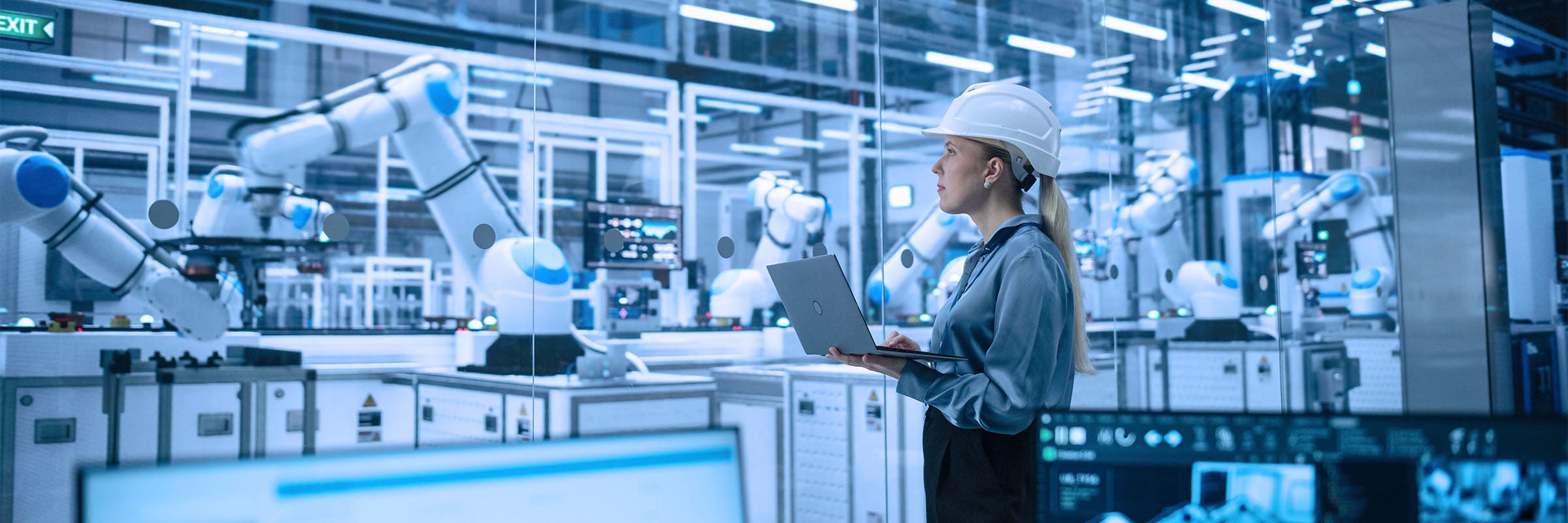Why AI and industrial automation are critical to the future of manufacturing

“AI will make industrial automation accessible to all manufacturers. Not just those with the highest throughput, but also the smaller enterprises.”
Etienne Lacroix, Founder & CEO
Vention
 Manufacturers are struggling to keep pace with macro-level trends that are largely beyond their control. Whether due to ongoing supply chain disruptions or sudden geopolitical changes, many are under pressure to “reshore” their operations and bring jobs back to their home countries. But that’s difficult to do during a labour shortage – especially one that has been building for years across most industrialized countries and is likely to continue for the rest of the decade.
Manufacturers are struggling to keep pace with macro-level trends that are largely beyond their control. Whether due to ongoing supply chain disruptions or sudden geopolitical changes, many are under pressure to “reshore” their operations and bring jobs back to their home countries. But that’s difficult to do during a labour shortage – especially one that has been building for years across most industrialized countries and is likely to continue for the rest of the decade.
Etienne Lacroix, CEO of Montréal-based Vention, strongly believes industrial automation is the key to addressing these issues. He also believes the manufacturing sector as a whole can’t do that unless automation is made available to companies of all sizes. This is where artificial intelligence (AI) has a major role to play, which Lacroix sees simplifying and accelerating both the design and programing of smarter equipment and machines.
“AI will make industrial automation accessible to all manufacturers,” he says. “Not just those with the highest throughput, but also the smaller enterprises.”
Removing the manual effort from industrial automation
Of course, industrial automation isn’t new; so why is there a barrier to change? Because, as Lacroix says, “there’s nothing more manual than industrial automation.” Because each manufacturer’s goods are unique to their business, most of the equipment that can help automate the manufacturing process has to be custom-made.
Companies typically hire an external systems integrator (a qualified engineering team who understands everything from robotics control to electrical safety) to design and commission the equipment. Not only is this expensive and time-consuming, it’s also difficult to scale, with any changes to the factory layout leading to rework and delays. While the larger companies can do that, Lacroix says most small and medium-sized manufacturers are reluctant, largely because it takes too long for them to recoup the costs of designing customized automation solutions.
“We’re looking at breakthrough in accessibility: what once required weeks of integration by specialized robotics engineers is now achievable in minutes.”
A future of products and platforms
Lacroix is positioning Vention as a leader in one of the most significant trends that will influence the manufacturing sector in the years to come: the platforming and productization of industrial equipment.
If “productization” means turning complex tasks into ready-to-deploy systems, “platforming” is about giving manufacturers an all-in-one, end-to-end environment where they can go from idea to a fully operational machine on the factory floor. So, instead of starting from scratch, manufacturers can choose from a library of pre-engineered applications like palletizers or bin-picking solutions, reducing deployment time and costs.
With AI, productization goes even further by eliminating the need for custom programming, making advanced automation accessible to teams of all sizes and skill levels.
Together, AI-driven platforming and productization shift industrial automation from bespoke projects to repeatable systems. Lacroix says that makes automation solutions faster to deploy, easier to adapt and simpler to scale – empowering all manufacturers to get started on their automation journeys. “You’ll do the entire cycle of a machine, from design to programming to simulation to ordering to deployment to operations, in an end-to-end environment that runs in your browser,” says Lacroix. “So, the act of creating those machines is extremely fast – up to three times faster than the traditional approach – and also much cheaper, so more companies can start automating their operations.”
“With AI, you just give the robot a mission: if you see the object, go and grab it without hitting anything. The robot will be smart enough to define how to do that on its own.”
What AI can do for industrial robotics
So, what kind of a tangible impact will AI-powered productization have on the factory floor? Just as AI is helping people who have never written a line of code create innovative apps and services, Lacroix expects the same to happen in manufacturing, with users calling on an AI to embed and program the routines that will allow industrial equipment to perform more efficiently and at less cost.
Consider the traditional approach to programming a robotic arm, which is prescriptive: that is, a trained expert needs to precisely define every single movement required by the robot. In comparison, AI enables what Lacroix calls mission-based programming.
“With AI, you just give the robot a mission: if you see the object, go and grab it without hitting anything,” he explains. “The robot will be smart enough to define how to do that on its own.”
Traditional robotic cells feature hundreds of logic-based sensors carefully orchestrating the timing and movement of every joint. But what if all those sensors could be replaced by a handful of AI-powered computer-vision cameras that need to track only the “fingertips” of the robotic arm to coordinate its movements? By interpreting the visual input, the AI can effectively “see” all instances of an object to be grabbed by the robotic arm, then determine the best place to grasp the object and how to pick it up without colliding with anything in the environment.
Best of all, none of those steps will need manual programming; the AI will handle all the details. And because cameras are much cheaper than sensors, Lacroix says this approach can reduce the cost of building a robotic cell by as much as $50,000 or more.
“Everything in the consumer world is connected, but not every machine hitting the shop floor comes with connectivity built in. Manufacturing is lagging in that area.”
The importance of connected manufacturing
Lacroix is convinced the best way for manufacturers to reshore their operations is by embracing industrial automation and AI. To make that happen, you also need to connect all the various machines so they can better communicate with each other.
While Wi-Fi is the standard for connecting users in an office, cellular connectivity (whether private or public) often makes more sense on the manufacturing floor, where it is easier to manage and secure, and where boosting signal strength can be more cost-effective.
That’s one of the reasons why Vention is partnering with Bell on its MachineMotion AI automation controller, ensuring it has built-in mobile connectivity that is enough secure and reliable. Combining Bell and Vention technologies enable new use cases and applications, like machine performance monitoring and predictive maintenance. That way, manufacturers can get even more value from the AI they bring into their operations.
Click here to find out more about Vention. For more industry and thought-leader perspectives, visit Bell’s business blog.